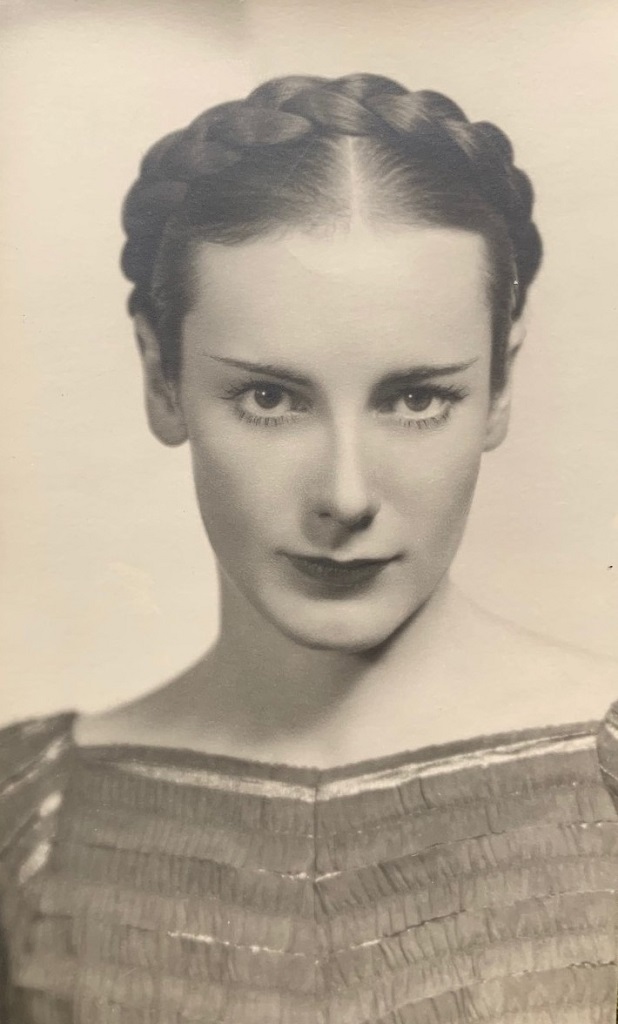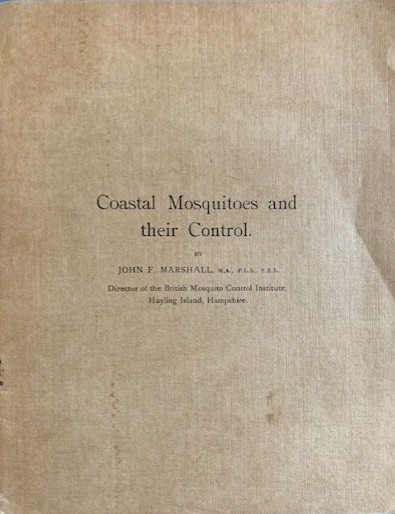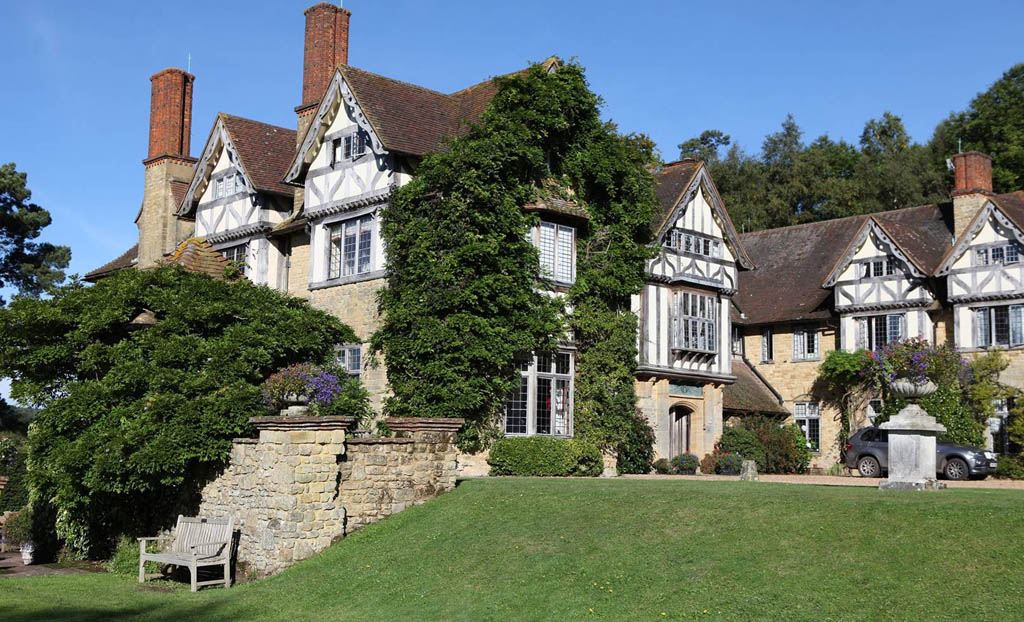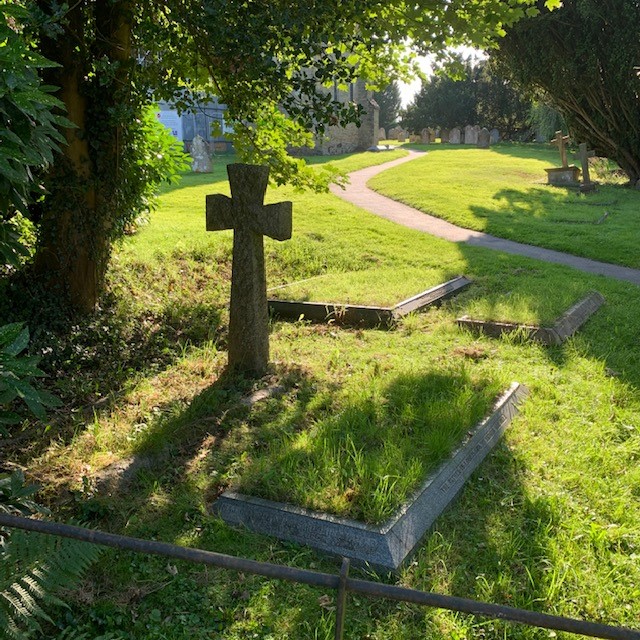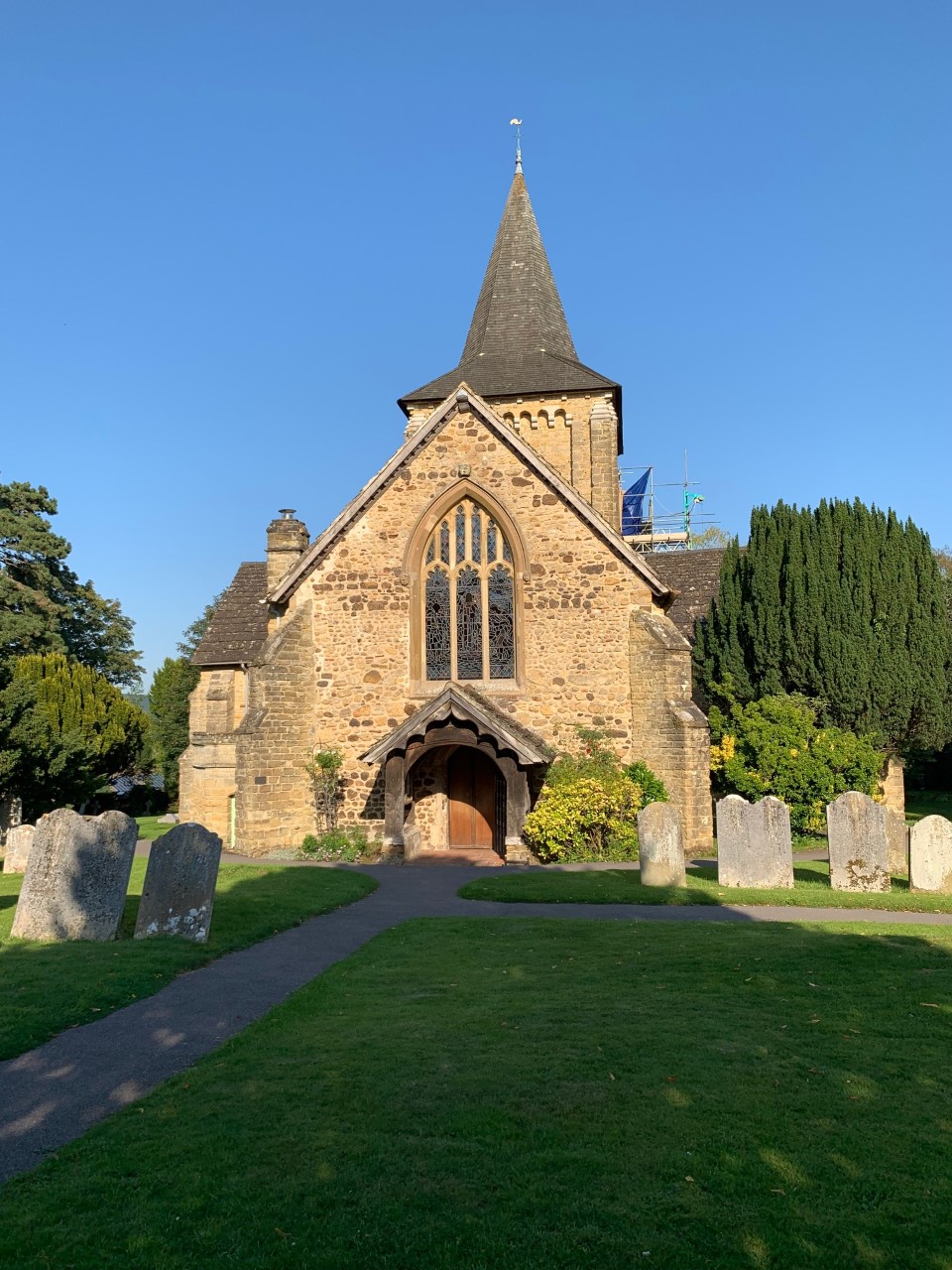
 |
Floor Plan |  |
The Dennis Wheatley 'Museum' - Champions of Reincarnation: Dennis Wheatley & Joan Grant
Joan Grant's life prior to 'Winged Pharaoh'
Joan Grant
Click on the image to enlarge
A monograph on Mosquito Control
written by Joan's father in 1925
Click on the images to enlarge
Joan Grant was born Joan Marshall on 12th April 1907 to John Frederick Marshall and Blanche Emily Hughes. She was accordingly some ten years younger than Dennis.
Her father was wealthy enough to pursue such interests as appealed to him, and these were in his case principally mosquito control (an interest brought about by the nuisance posed by these insects on Hayling Island), and 'Real Tennis' (not to be confused with the later 'Lawn Tennis' variety).
Joan's mother was quite strong minded, as was her father, and according to Joan's account her mother was a gifted psychic. In 'Time Out Of Mind' she tells how her mother apparently foresaw not only the collapse of the glass roof to the real tennis court her husband was building, thereby saving of lives, but she also predicted the sinking of the Titanic and the Lusitania.
According to 'Time Out Of Mind', Joan's childhood was a mixture of the mundane and the curious. From early childhood, Joan could apparently see dead people, and apparently took it for granted for a long time that everyone else could do the same, but didn't mention it out of politeness.
Joan's father took his family (his wife, Joan, and her two elder half-sisters) to New York for a short period at the start of World War One because he had promised to play a game of tennis there and was resolved to keep the appointment.
While there, the young Joan met two interesting people. One who has been popularly referenced was the rather objectionable (according to Joan) Aleister Crowley. Her mother apparently sent him packing. The other, who is perhaps more noteworthy in our context, was Hereward Carrington, the investigator of psychic phenomena and author of a book called 'The Projection of the Astral Body'. Possibly they talked of this.
Back in England, while emulating a Greek nymph dancing to Pan pipes (yes, that is what she said !) Joan snapped one of the tendons in her ankle, and while recuperating "For the next two months I taught my body to play golf without going nearer a links than a bed or a sofa... with the patience of the owner of performing seals teaching one of them to balance a rubber ball on its nose, I made each muscle learn its part in the act".
Apparently, having never played golf properly before, four days after the cast was taken off she competed in the Hampshire County Championships, entering five events and winning all of them.
Her father was apparently so proud that he carried a cutting about it from The Daily Chronicle around in his note-case for years which read :
"GIRL GOLF WONDER
Sixteen-year-old player carries off five awards
in Hants County Championship"
A good golfer Joan certainly was, because I have seen her name in the listings for the 1926 Girls Championships. It was reported on in newspapers from Portsmouth to as far away as Dublin, although on that occasion Joan did not do so well.
Shortly after this, we are told that Joan entertained the novelist H.G. Wells while her father was away. Wells, who was well known for his roving eye, found her entertaining and encouraged her to write.
Around the time she was twenty, her father opened an account for her at a famous restaurant in London, the Berkeley, so she could entertain. She did so a little more lavishly than he had envisaged, and perhaps with a little more style - on one occasion she apparently borrowed a cheetah from a friend and it accompanied her to lunch.
"Sheba behaved beautifully, and ate her four pounds
of chopped steak sitting on a chair with a napkin tied
under her chin; but Ferraro saw her presence made
his other clients nervous and caused them to hurry
through their meal"
Perhaps this should have come as no surprise.
Shortly thereafter she met cricketer Douglas Jardine of later 'Bodyline' fame, who was then captain of the Oxford XI. The following year she was at his side when he inspected the wicket at Lords. She was somewhat relieved when he declared the wicket not fit to play and when they were 'forced' to go to the cinema instead.
Joan - by then a bewitching beauty, as the photos show - was courted by a number of beaus, and was briefly engaged to one called Esmond, who died of an accidental gunshot wound.
Joan made the mistake of telling her father that, unmarried, she had slept with the young man before he died. This was considered utterly immoral behaviour at the time, and in disgrace she was packed off to a couple of his elderly spinster acquaintances whom she had never met. She was given strict instructions not to tell them what she had done, because they wouldn't understand, and they would certainly not approve.
The spinster acquaintances were Daisy and Elfie Sartorius, and they lived at Hurtwood House, a breath-takingly beautiful house near Dorking in Surrey, which is now a private school. Joan described it as simply "coming home", and it did indeed become her spiritual home. As for her being an 'adulteress' (she was not in fact an adulteress, because she had never been married), Daisy simply remarked "Are you, my dear ? How lovely for you. I never had the chance". A class act if ever there was one.
Hurtwood House; Daisy and Elfie Sartorius's
family home, and Joan's 'spiritual home'
Built in 1908 it is now a school
Click on the image to enlarge
The graves of Major General Euston Sartorius VC (right foreground)
and his daughters Elfie and Daisy (left background) at the Church of
St Peter & St Paul, Ewhurst, Surrey, and the memorial to their brother,
who was killed in action in World War One
Click on the images to enlarge
The Sartorius family were extraordinary. Daisy and Elfie's grandfather had been an Admiral who fought at Trafalgar, and both their father Euston and his brother Reginald were Major Generals and had VCs. Astonishing as it seems, they were not the only brothers to have both been awarded VCs; there have been others. Daisy and Elfie had originally been part of a trio; they had a brother named Euston after his father (but nicknamed 'Bunny'), who died in action while serving on the Front Line in World War One.
Not long after discovering the Sartorius sisters, in November 1927 Joan married her first husband Leslie, whom she had known on-and-off for a number of years. They went on a variety of foreign trips. First a honeymoon to France and then to South America before settling back home, where their daughter Gillian was born.
Joan realised in 1930 that she could 'psychometrise' - that is, visualise the past lives of those associated with objects, and she practised it until she obtained proficiency.
In July 1934 Leslie came home and announced to Joan that he had been given - somewhat impromptu, it seems - a job as the photographer on an archaeological dig in Iraq. The dig turned out to be at Tel Asmar, under the direction of Henri ('Hans') Frankfort, a young but celebrated Dutch archaeologist. After a few months Joan joined Leslie sans Gillian, and took on the vital but incredibly tedious job of drawing pots. After this assignment they took a short - and Joan's only ever - trip to Egypt, which lasted from 5th to 30th March 1935 - i.e. 25 days in total. They took the train down to Amarna, where they stayed with one of England's great scholar-eccentrics - John Pendlebury, who was later to be a hero of the Cretan resistance and summarily executed by the Gestapo. He was too dangerous to let live.
The Amarna cliff-line looked strangely familiar to Joan; when she was later to recall her life as Sekeeta she was to remember this as the skyline against which she had fought the Zuma in the 'battle of the amphitheatre of grain'.
Joan was indiscreet about her skills with psychometry, 'explaining' (my word) a couple of points to the archaeologists, and this no doubt embarrassed Leslie.
Leslie subsequently went back for a second season in Iraq after which they spent some time with friends in Scotland before going back to Hurtwood to see Daisy, who was ill with cancer.
That takes us on to the next phase of the story, which follows after the next exhibit.
References : There is a Joan Grant website http://www.joangrant.net/
'Time Out Of Mind'. As the book doesn't have an index, the following may serve as
a useful reference list for the episodes mentioned :
The Real Tennis Court roof incident pp16-17, Aleister Crowley pp 42-44 , Hereward
Carrington p42, The Titanic p44, The Lusitania pp37, 44-47, Golf pp 79-82, H.G.
Wells pp 84-5, Taking a cheetah to lunch p86, Douglas Jardine pp86-7. Leslie Grant
pp 78- 79, 104, 112,117-122 etc. First trip to Hurtwood p 109, Bunny p111, Gillian
p164 etc Early psychometry pp167-172, Tel Asmar pp175-201. Egypt pp 201-211,
Deir-el-Bahri story p 208, the scarab p229,reading Petrie p 239, Sir Henry Wood and
Dr Marr p244, Life as Carola p245, reading to Daisy while she was dying and the
revelation that Bunny had been her father the Pharaoh and Daisy his wife and her
own mother pp253-4.
On 'Bunny', see http://ewhurstfallen.co.uk/Men-research/sartorius/sartorius.htm
There are entries on both the Major Generals on Wikipedia, and their VCs can be
seen at the National Army Museum in Chelsea.
Provenance of mosquito pamphlet : Private Collection
Photo of Hurtwood House School courtesy of The Tatler
